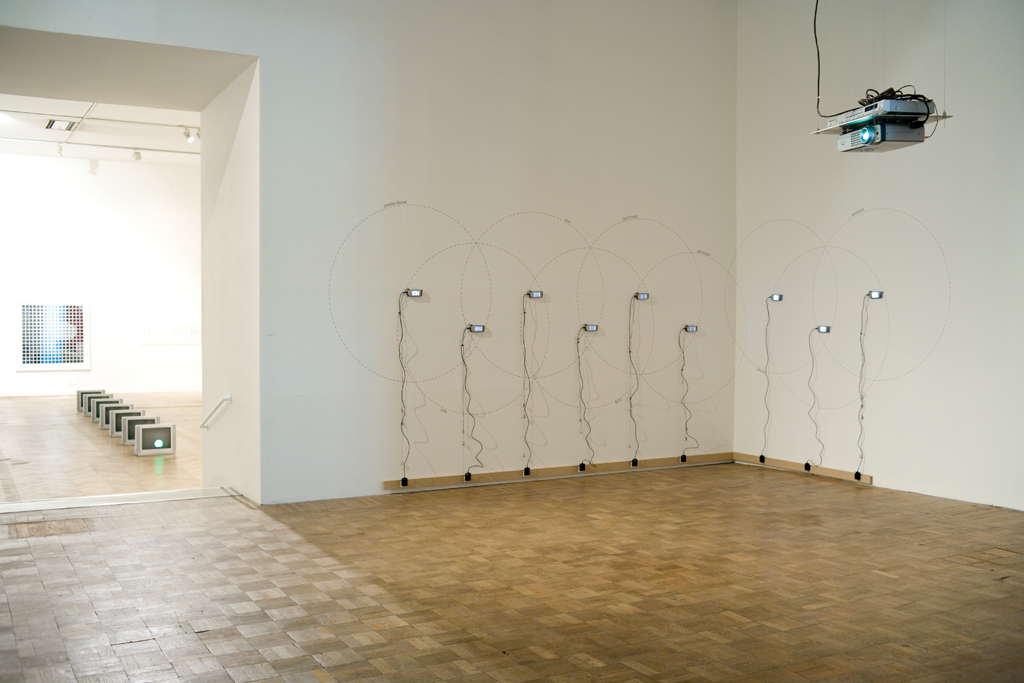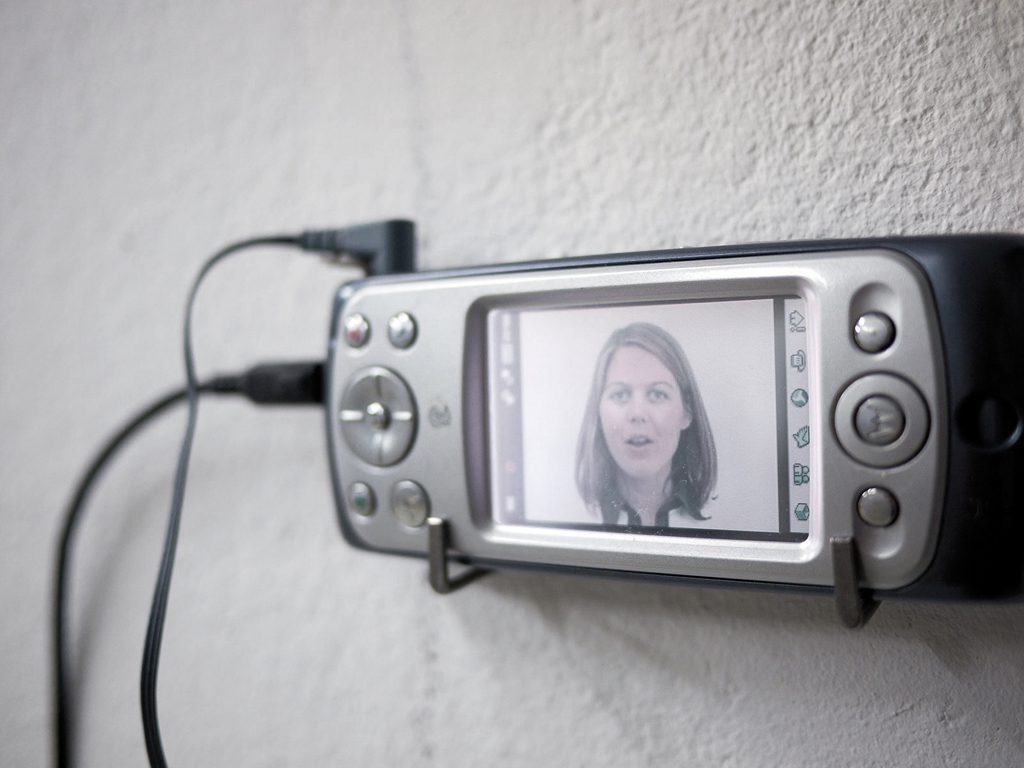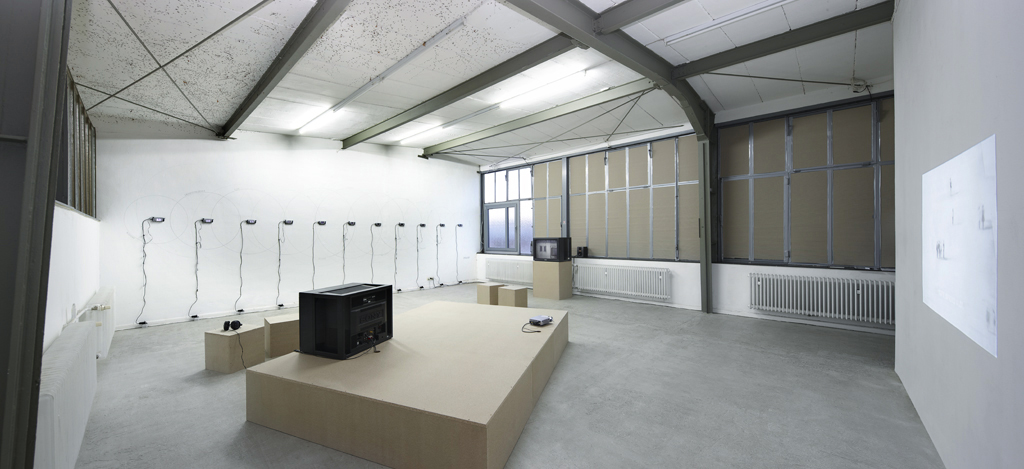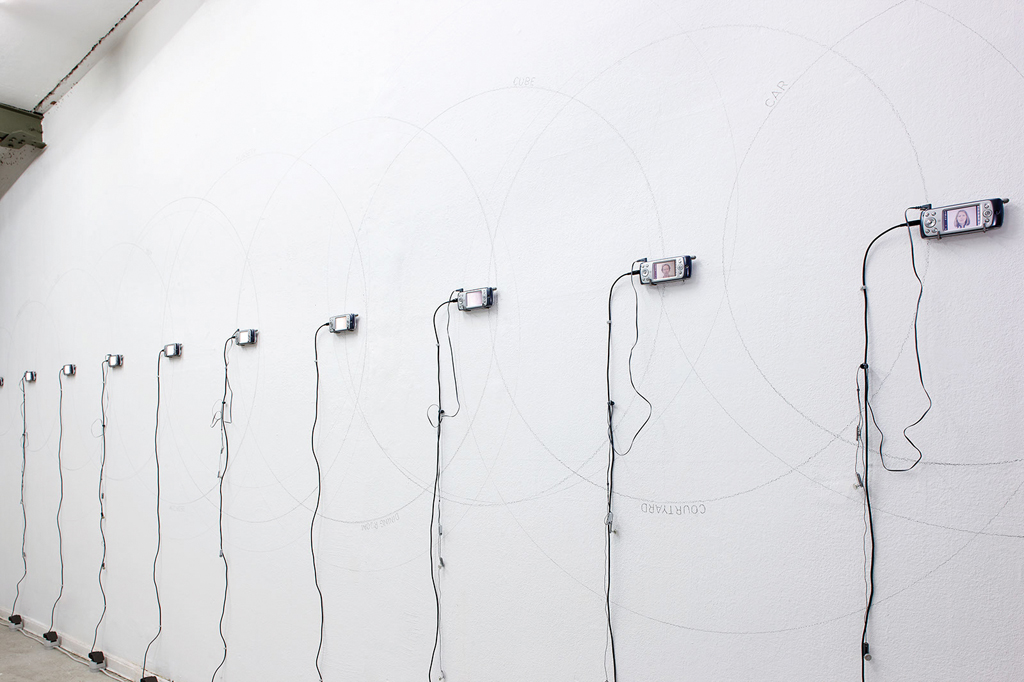Dashed II
12 mobile phones (interviews), wall graphic, 8 x 2 m,
English
, 2005Interviewees: Johannes Auvinen, Megan Bodley, Thomas Crawley, Jeff Derksen, Marina Haydn, Joanna Lewis, Andrea Lumplecker, Jonathan Quinn, Stephen Mathewson, Genoa Mungin, Gerald Straub, Surachai Sutthisasanakul

© Exhibition view zeit
raum
zeit, Künstlerhaus Wien, Vienna, 2008.Photo: Michael Goldgruber
Locations
:------------------------------------------------------------------------------------------------
01 – Jeff Derksen, Vancouver (CDN):
hut
02 – Joanna Lewis, Melbourne (AUS):
nursery
03 – Andrea Lumplecker, New York (USA):
garden in NY
04 – Johannes Auvinen, Los Angeles:
red room
05 – Surachai Sutthisasanakul, Washington DC (USA):
dining room
06 – Megan Bodley, Wien:
bedroom
07 – Jonathan Quinn, Wien:
cubus
08 – Genoa Mungin, New York (USA):
club
09 – Steven Mathewson, Salzburg:
courtyard
10 – Thomas Crawley, Wien:
exhibition space
11 – Marina Haydn:
car
12 – Gerald Straub, Steiermark:
ventilation

© Exhibitions view zeit
raum
zeit, Künstlerhaus Wien, Vienna, 2008.Photo: Michael Goldgruber
=werk=17=f27

© Exhibition view Prelude*), Hafen2 | interim.projekte, Offenbach am Main, 2010.
Photo: Eduardo Perez

© Exhibition view Prelude*), Hafen2 | interim.projekte, Offenbach am Main, 2010.
Photo: Eduardo Perez
